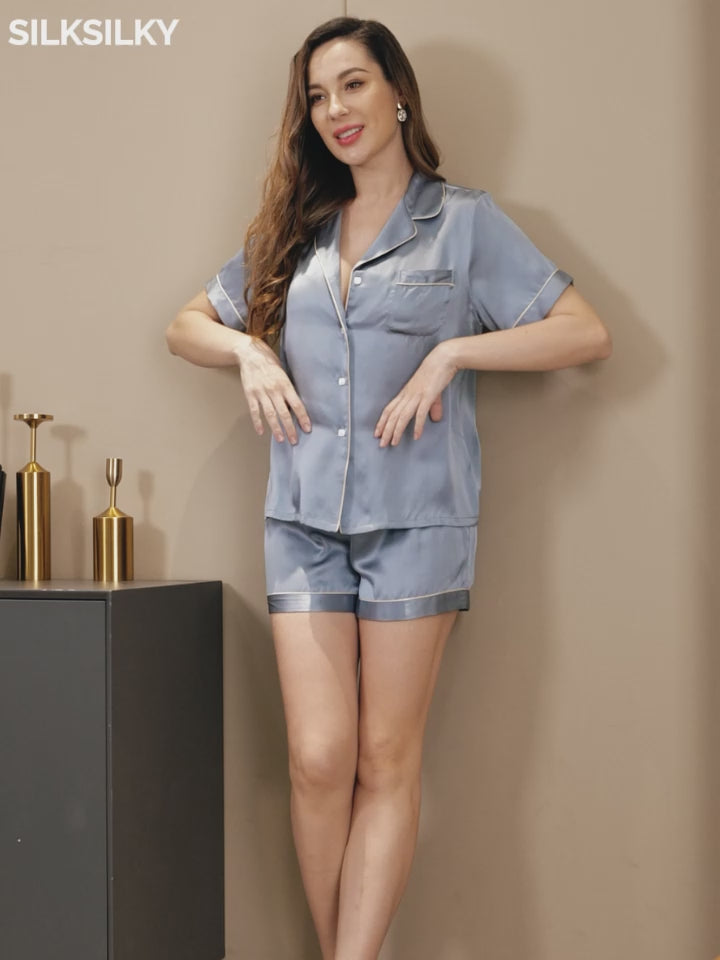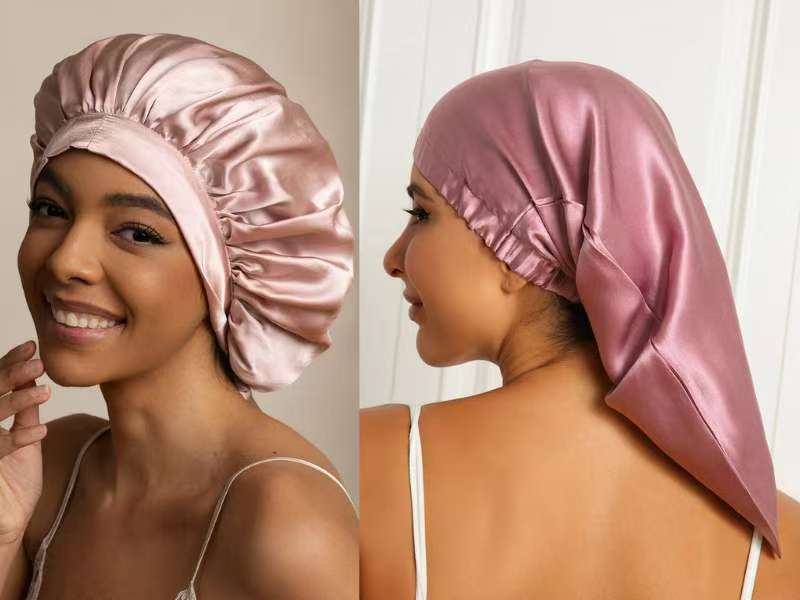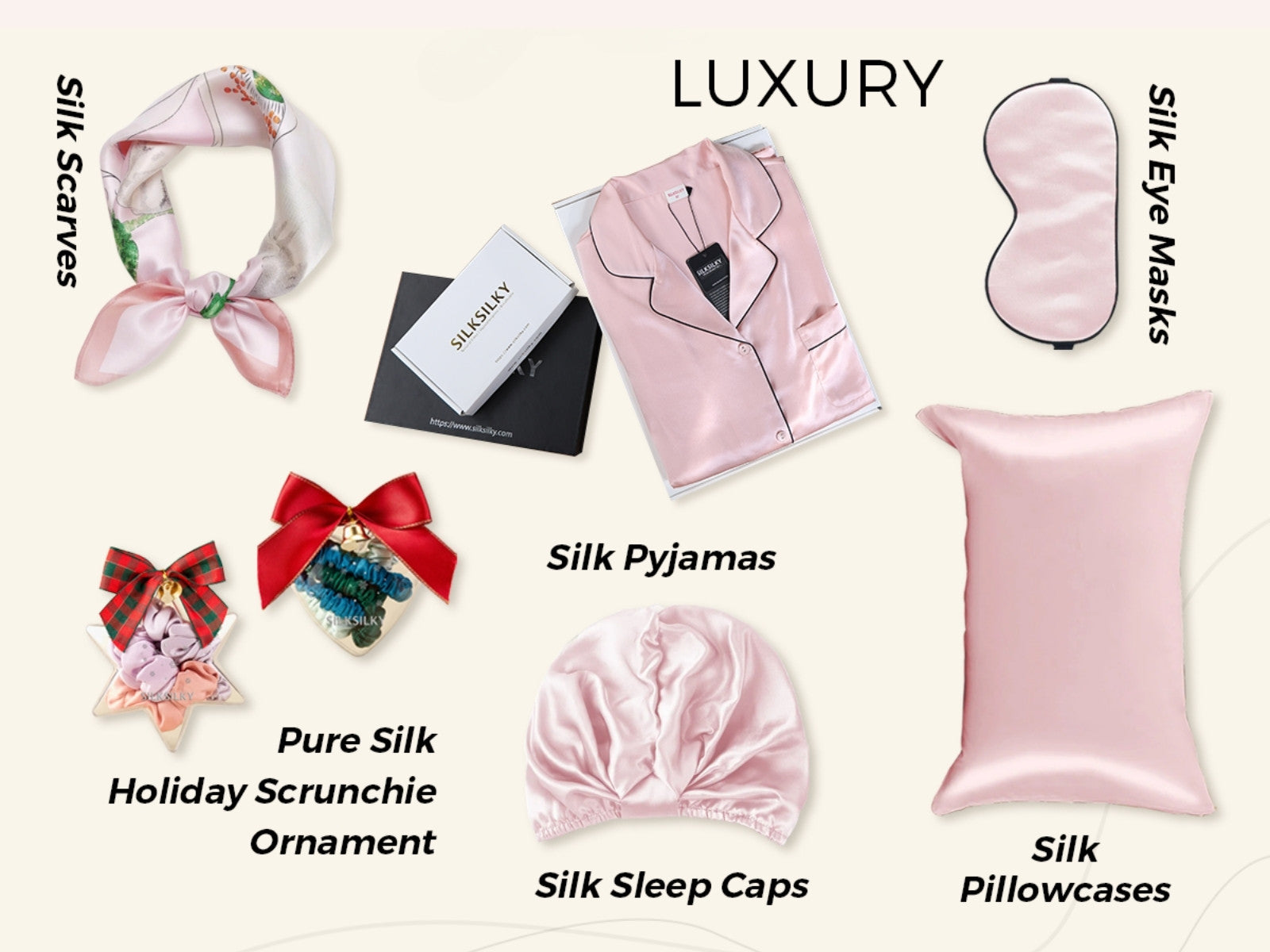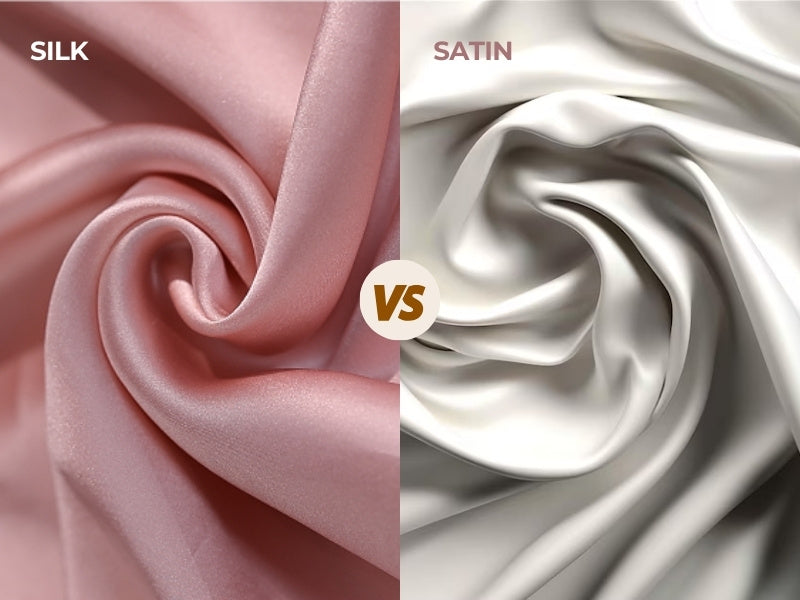The Ultimate Guide to Choosing and Caring for Silk Bedding: Elevate Your Sleep Experience
Table of Contents
Life is often spent in bed—sleeping, resting, and rejuvenating. Given that we dedicate a significant portion of our lives to this sanctuary, investing in high-quality bedding that supports our well-being is crucial. Among the myriad of bedding materials available, silk stands out for its unique benefits. In this blog, we will explore why silk bedding is a wise choice, how it compares to other materials, what factors to consider when purchasing silk bedding, and essential care tips to ensure its longevity.
Why Choose Silk Bedding?
Silk bedding offers a multitude of advantages that make it an excellent investment for anyone seeking comfort and quality in their sleep environment. Here’s a more in-depth exploration of why silk should be your top choice for bedding.
1. Natural Fiber Benefits
Silk is derived from the cocoons of silkworms, making it a completely natural fiber. Here are some of the standout benefits of this organic material:
- Hypoallergenic Properties: Silk is naturally resistant to dust mites, mold, and other allergens. For allergy sufferers or individuals with sensitive skin, silk provides a safe and comfortable sleeping surface that minimizes irritation and promotes better health.
- Chemical-Free: Unlike many synthetic bedding materials that may be treated with harsh chemicals, silk is a natural product. This means you’re less likely to encounter harmful substances that could affect your health or disrupt your sleep.
2. Temperature Regulation
One of the most remarkable features of silk is its ability to regulate temperature effectively:
- Thermal Insulation: Silk’s unique structure allows it to trap air, providing warmth without the bulk. This makes it ideal for colder months, as it keeps you cozy without overheating.
- Cool to the Touch: In the warmer months, silk has a natural cooling effect. Its ability to wick moisture away from the body helps prevent overheating, ensuring you stay comfortable and dry throughout the night.
3. Moisture-Wicking Properties
Silk’s moisture-wicking abilities make it a superior choice for bedding:
- Breathability: The natural fibers of silk allow for excellent airflow, helping to keep your body at an optimal temperature and reducing the likelihood of sweating during sleep.
- Skin Hydration: Unlike some materials that can absorb moisture, silk helps maintain skin hydration. It allows your skin to breathe, which can be particularly beneficial for maintaining a healthy complexion.
4. Luxurious Feel and Appearance
Silk beddings set elevates the aesthetic appeal of any bedroom:
- Sumptuous Texture: The smooth, soft texture of silk feels luxurious against the skin, creating an inviting sleep environment. This tactile pleasure can enhance your overall sleep experience, making it more restful and enjoyable.
- Elegant Shine: Silk has a natural sheen that adds elegance and sophistication to your bedroom decor. Whether you prefer a classic or contemporary look, silk bedding can complement a variety of styles and elevate the overall ambiance.
5. Durability and Longevity
While silk may seem delicate, it can be incredibly durable with proper care:
- Long-Lasting Quality: High-quality silk bedding can last for many years, making it a wise investment. Unlike lower-quality materials that may wear out or lose their luster, silk maintains its beauty and functionality over time.
- Timeless Investment: Because of its durability, silk bedding often proves to be more cost-effective in the long run. Investing in high-quality silk can save you from needing to frequently replace inferior bedding materials.
6. Support for Sleep Quality
The right bedding can significantly impact your overall sleep quality:
- Comfort and Relaxation: The luxurious feel of silk encourages relaxation, making it easier to unwind at the end of the day. Quality sleep is essential for physical and mental well-being, and silk bedding can help facilitate this.
- Reduced Nighttime Disturbances: The smooth surface of silk minimizes friction with your skin and hair, which can help reduce disturbances during sleep. This can lead to fewer interruptions and a more restful night.
7. Sustainable Choice
Silk can also be a more sustainable option compared to synthetic materials:
- Biodegradable Material: Being a natural fiber, silk is biodegradable, which means it breaks down naturally without harming the environment. This makes it a more eco-friendly choice for those looking to reduce their environmental footprint.
- Renewable Resource: Silk production relies on silkworms, which are raised in controlled environments. When sourced responsibly, silk can be a renewable resource that supports sustainable farming practices.
Comparing Silk Bedding with Other Materials
When choosing bedding, it’s essential to understand how different materials stack up against each other. While silk is renowned for its luxurious qualities, it’s helpful to compare it with other common bedding materials like cotton and polyester. Let’s delve deeper into the characteristics of each material to help you make an informed decision.
| Feature | Silk | Cotton | Polyester | Linen |
|---|---|---|---|---|
| Comfort & Feel | Exceptionally smooth, luxurious, and soft. | Soft and comfortable, but less smooth than silk. | Can feel synthetic and lacks luxury. | Can be rough initially, softens over time. |
| Breathability | Excellent, wicks moisture to keep you cool and dry. | Good, but absorbs moisture. | Poor, traps heat and moisture. | Excellent, very breathable and cool. |
| Hypoallergenic | Naturally hypoallergenic and resistant to dust mites. | Not naturally hypoallergenic. | Not naturally hypoallergenic. | Naturally hypoallergenic. |
| Durability | Very durable with proper care (especially high momme). | Durable, but can wear out faster than silk. | Highly durable and resistant to shrinking/wrinkling. | Extremely durable, gets stronger with washes. |
| Maintenance | Requires delicate care (hand wash or gentle cycle). | Easy to wash and care for. | Very low-maintenance. | Easy to wash, but prone to wrinkling. |
| Price Point | Premium / High-end. | Affordable to mid-range. | Most affordable. | Mid-range to high-end. |
1. Silk vs. Cotton
Cotton is one of the most widely used bedding materials, known for its comfort and breathability. Here’s how it compares to silk:
- Comfort and Feel: While cotton is soft and comfortable, it doesn’t match the silky smoothness of silk. The texture of silk is often described as sumptuous, providing a unique sensory experience that many find more luxurious.
- Temperature Control: Cotton offers decent temperature regulation, but it tends to absorb moisture rather than wick it away. In contrast, silk’s superior moisture-wicking properties mean it can keep you cooler and more comfortable during hot nights.
- Durability: High-quality cotton can be quite durable, but it may wear out faster than silk. Silk, especially at a higher momme count, can last for years with proper care, maintaining its beauty and softness longer than cotton sheets.
- Maintenance: Cotton is generally easier to wash and maintain than silk, which often requires more delicate care. However, the effort put into maintaining silk can be worth it for the luxurious experience it provides.
- Price Point: Cotton bedding is typically more affordable than silk. While you can find high-end cotton options, silk bedding usually comes at a higher price due to the labor-intensive process of silk production.
2. Silk vs. Polyester
Polyester is a synthetic fabric commonly used in bedding. Here’s how it contrasts with silk:
- Breathability: Polyester is less breathable than silk, which can lead to overheating during sleep. Silk’s natural fibers allow for better airflow, making it a more comfortable choice for those prone to night sweats.
- Hypoallergenic Properties: While some polyester products are treated to be hypoallergenic, silk naturally resists dust mites and allergens. For individuals with allergies or sensitive skin, silk is generally the safer option.
- Moisture Management: Polyester can trap moisture, making it feel clammy and uncomfortable. In contrast, silk effectively wicks away moisture, helping you stay dry and comfortable throughout the night.
- Environmental Impact: Polyester is a synthetic fiber derived from petroleum, contributing to environmental concerns. In contrast, silk is a natural fiber that, when sourced sustainably, can be a more eco-friendly option.
- Durability and Care: Polyester is highly durable and resistant to wrinkling and fading, making it low-maintenance. However, it may lack the luxurious feel and elegance of silk. Silk requires more careful washing and drying but can reward you with longevity and a premium experience.
3. Silk vs. Linen
Linen is another natural fiber that has gained popularity in recent years, especially for its rustic charm. Let’s compare it to silk:
- Texture and Feel: Linen has a unique texture that some find appealing, but it can be rougher than silk. Silk provides a smoother and more luxurious feel against the skin, making it more comfortable for sleep.
- Breathability: Both silk and linen are breathable fabrics, but they achieve this in different ways. Linen is great for hot weather, but silk excels at moisture management, keeping you cool and dry.
- Durability: Linen is incredibly durable and can withstand many washes. However, high-quality silk, when cared for properly, can last just as long and maintain its softness.
- Care Requirements: Linen is generally easier to care for and can withstand higher washing temperatures. Silk requires gentler treatment to preserve its integrity, which may be a consideration for some.
- Aesthetic Appeal: Linen has a casual, relaxed look, while silk offers a more refined and elegant appearance. Your choice may depend on the overall aesthetic you want to achieve in your bedroom.
8 Factors to Consider When Purchasing Silk Bedding
Investing in silk bedding is a decision that can significantly enhance your sleep experience, but it’s essential to consider several factors to ensure you choose the right product for your needs. Here’s a comprehensive guide to what you should look for when purchasing silk bedding.
1. Type of Silk
Silk comes in various types, each offering different qualities and price points. Understanding these can help you make an informed decision:
- Mulberry Silk: This is the highest quality silk, made from the cocoons of silkworms that are fed a controlled diet of mulberry leaves. It is incredibly soft, hypoallergenic, and has a smooth finish, making it the top choice for bedding.
- Tussah Silk: Tussah silk comes from wild silkworms and has a coarser texture compared to mulberry silk. It is typically less expensive but may not provide the same luxurious feel.
- Charmeuse Silk: This type is known for its glossy surface and soft feel. It’s often used for pillowcases and sheets, offering a high-end look and feel.
- Silk Blends: Some bedding may be blended with other fibers, such as cotton or polyester, to enhance durability or reduce cost. While these can still provide some benefits of silk, they may not offer the full range of qualities found in pure silk.
2. Mommes (Weight)
Mommes (mm) refer to the weight of silk fabric, which is crucial when assessing quality:
- Understanding Mommes: A higher momme count indicates a denser, more durable fabric. For bedding, a momme count of 19 or higher is typically recommended. The weight affects the feel and longevity of the silk.
- Choosing the Right Weight: If you’re looking for everyday sheets, 19 momme is suitable. For a more luxurious experience, consider 22 momme or higher, which offers superior durability and a sumptuous feel.
3. Thread Count
While thread count is more commonly discussed in the context of cotton, it can still provide insights into silk quality:
- Impact on Quality: A higher thread count usually indicates finer silk fibers woven more closely together, resulting in a smoother texture and increased durability. For silk, a thread count of around 400 is considered ideal.
- Balancing Factors: Remember that while thread count is important, it’s just one of several factors. Pay attention to momme weight and the type of silk to get a comprehensive picture of quality.
4. Care Instructions
Silk requires more delicate care than many other bedding materials:
- Washing: Check if the silk bedding is machine washable or requires hand washing. Some silk items may need to be dry cleaned to maintain their integrity.
- Temperature Sensitivity: Silk is sensitive to heat, so always use cold water for washing and avoid high-temperature drying. Understanding these requirements can prevent damage and ensure your bedding lasts longer.
- Ironing and Storing: If you need to iron your silk, use a low-heat setting or a steamer. For storage, keep it in a cool, dry place away from direct sunlight to prevent fading.
5. Budget
Silk bedding can vary widely in price, so it’s essential to set a budget:
- Understanding Price Points: Higher-quality silk will typically be more expensive due to its superior properties and the labor-intensive production process. While silk can be a significant investment, it’s crucial to balance quality with what you can afford.
- Long-Term Investment: Consider the longevity of silk bedding. Although the initial cost may be higher, the durability and timeless appeal of silk can make it a cost-effective choice in the long run.
6. Design and Aesthetics
The visual appeal of your bedding is also important:
- Color and Pattern Options: Silk bedding is available in various colors and patterns, allowing you to choose options that complement your bedroom decor. Whether you prefer solid colors, floral patterns, or bold designs, silk can enhance your space.
- Finishing Touches: Look for details like piping, embroidery, or unique weaves that can add character to your bedding. These elements can elevate the overall aesthetic and contribute to a more luxurious feel.
7. Brand Reputation and Reviews
Researching brands and products can provide valuable insights:
- Reputable Brands: Look for brands known for their quality silk products. Established brands often have more consistent quality and better customer service.
- Customer Reviews: Reading reviews from other customers can help you gauge the quality and performance of specific silk bedding products. Look for feedback on comfort, durability, and overall satisfaction.
8. Environmental and Ethical Considerations
As consumers become more conscious of sustainability, it’s essential to consider the environmental impact of your bedding choices:
- Sustainable Sourcing: Look for brands that prioritize sustainable practices in silk production. Some companies offer eco-friendly silk sourced from farms that maintain ethical and environmentally responsible methods.
- Certifications: Certifications like OEKO-TEX® can provide assurance that the silk has been tested for harmful substances, contributing to a safer sleep environment.
5 Essential Care Tips for Silk Bedding
To maintain the beauty and longevity of your silk bedding, follow these essential care tips:
1. Washing
Always check the care label before washing. Hand washing in cold water with a gentle detergent is usually recommended. If machine washing, use a delicate cycle and a laundry bag to protect the silk.
2. Drying
Avoid wringing out silk; instead, lay it flat on a clean towel to absorb excess water. Never tumble dry silk, as the heat can damage the fibers. Air drying in a shaded area is best.
3. Ironing
If your silk bedding becomes wrinkled, use a low-heat setting on your iron. Alternatively, you can steam it to remove wrinkles without direct contact.
4. Storage
When storing silk bedding, keep it in a cool, dry place away from direct sunlight. Consider using breathable storage bags to protect it from dust and pests.
5. Regular Maintenance
To keep silk bedding looking its best, wash it regularly, and consider using a silk-safe fabric spray to refresh the material between washes.
Ready to Transform Your Rest with Silk Bedding
Investing in quality bedding is essential for a good night’s sleep, and silk bedding stands out as an exceptional choice. Its natural properties, luxurious feel, and ability to regulate temperature make it a favorite among those who prioritize comfort and health. By considering the various factors involved in purchasing silk bedding and following the care tips outlined, you can enjoy the benefits of silk for years to come.
Remember, since we spend a substantial amount of our lives in bed, it’s worth making thoughtful choices about our bedding. Silk may just be the perfect addition to your sleep sanctuary, transforming your rest into a truly luxurious experience.
![[Light Blue] SilkSilky Pure Silk Notch Collar Women's Pajamas 001,](http://silksilky.com/cdn/shop/files/ab83afb9301666ee2f174a8ae72ffda4_4e9bb488-7880-40fe-9e69-f0fd823857c5.jpg?v=1764653199&width=1200)
![[Light Blue] SilkSilky Pure Silk Notch Collar Women's Pajamas 002,](http://silksilky.com/cdn/shop/files/db8dbeee5354fe3b631b963715847ffe.jpg?v=1764653202&width=1200)
![[Dark Red] SilkSilky Pure Silk Notch Collar Women's Pajamas 001,](http://silksilky.com/cdn/shop/files/599ed0811e1a5fcfa55bdc80a0279704_2643c850-a793-4475-a52b-7fef1bbd7e36.jpg?v=1762233837&width=1200)
![[Dark Red] SilkSilky Pure Silk Notch Collar Women's Pajamas 002,](http://silksilky.com/cdn/shop/files/9e022d4dd4f99aed4af8da3f58fcfd5b_efb9bafe-3d71-4283-9b81-e339ff08f352.jpg?v=1762233837&width=1200)
![[White] SilkSilky Pure Silk V Neck Nightgown 001,](http://silksilky.com/cdn/shop/files/a8ae95260a57844b1e2e00c4fcfabdcc_b922b270-af10-4e96-9493-0d877bd663db.jpg?v=1764140639&width=1200)
![[White] SilkSilky Pure Silk V Neck Nightgown 002,](http://silksilky.com/cdn/shop/files/24ac506750f8c38c51bb5b6d0ee15287.jpg?v=1764140639&width=1200)
![[Pink] SilkSilky Pure Silk Sleep Cap 001,](http://silksilky.com/cdn/shop/files/SilkSilky_Pure_Silk_Sleep_Cap_Pink_001_C-250529006.jpg?v=1762221980&width=1200)
![[Pink] SilkSilky Pure Silk Sleep Cap 002,](http://silksilky.com/cdn/shop/files/SilkSilky_Pure_Silk_Sleep_Cap_Pink_002_C-250529006.jpg?v=1762221980&width=1200)
![[Steel Blue] SilkSilky Pure Silk Notch Collar Women's Pajamas 001,](http://silksilky.com/cdn/shop/files/05b358f92fb5d252122b00d69a2fcfc5_88211a42-88c4-4448-8cb3-5f18529bfef8.jpg?v=1762237226&width=1200)











